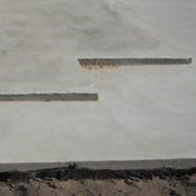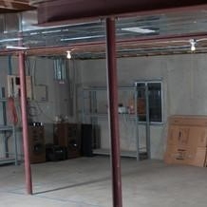
Can you identify a foundation by looking at it? Hopefully, the answer is yes! If a client falls in love with a house and asks you about the foundation, will you be able to tell them what it is and some benefits of that particular type?
There are really two things that describe a foundation:
- What type is it? Basement, crawl space or slab
- What is it made of? Poured concrete, stone or cinder block
If you don't know the difference (or why it matters) read on to find out more!
Crawlspace, Slab or Basement?
 A crawl space is an unfinished space under a home, usually only a couple feet high. The idea is to keep a home off the ground (protecting it from moisture) while providing access to plumbing and wiring. Crawl spaces are not "finished" areas so floors are usually bare dirt and the walls have little protection from leaking. If a crawl space is not sealed and properly vented, the area is at risk of mold growth.
A crawl space is an unfinished space under a home, usually only a couple feet high. The idea is to keep a home off the ground (protecting it from moisture) while providing access to plumbing and wiring. Crawl spaces are not "finished" areas so floors are usually bare dirt and the walls have little protection from leaking. If a crawl space is not sealed and properly vented, the area is at risk of mold growth.
 Slab foundations are made by pouring concrete directly onto leveled soil or a bed of gravel. They aren't terribly common in the Midwest due to severe weather however, they are a relatively quick an inexpensive way to build. If damaged, these foundations can be difficult to repair due to difficulty in accessing the problem area.
Slab foundations are made by pouring concrete directly onto leveled soil or a bed of gravel. They aren't terribly common in the Midwest due to severe weather however, they are a relatively quick an inexpensive way to build. If damaged, these foundations can be difficult to repair due to difficulty in accessing the problem area.
 Full basements may be the most common foundation found in the Midwest. Not only does it provide protection in case of storms, but many people use it for storage or extra living space. A full basement is the most expensive foundation option to build, due to the necessity of excavation and time needed to build the walls. If left unfinished, most potential problems can be spotted early and repaired quickly, which could save thousands of dollars.
Full basements may be the most common foundation found in the Midwest. Not only does it provide protection in case of storms, but many people use it for storage or extra living space. A full basement is the most expensive foundation option to build, due to the necessity of excavation and time needed to build the walls. If left unfinished, most potential problems can be spotted early and repaired quickly, which could save thousands of dollars.
Poured concrete, cinder block or stone?
 The most common type of foundations in new construction is the poured concrete wall, due to low cost and design flexibility. These walls can withstand tremendous pressure from soil movement and are easy to waterproof. If a poured concrete wall cracks from settling, it is a simple fix for a concrete professional to inject and prevent leaks.
The most common type of foundations in new construction is the poured concrete wall, due to low cost and design flexibility. These walls can withstand tremendous pressure from soil movement and are easy to waterproof. If a poured concrete wall cracks from settling, it is a simple fix for a concrete professional to inject and prevent leaks.
 Cinder blocks were the most common material used for foundations until sometime in the 60's , but are still used in some cases. Cinder blocks are less expensive to build than poured concrete walls, but they are more susceptible to sideways movement. Waterproofing can also be difficult due to the porous nature of the blocks and the joints between them.
Cinder blocks were the most common material used for foundations until sometime in the 60's , but are still used in some cases. Cinder blocks are less expensive to build than poured concrete walls, but they are more susceptible to sideways movement. Waterproofing can also be difficult due to the porous nature of the blocks and the joints between them.
 Stone foundations used to be very common before World War I, and are found throughout the Midwest. Often, these foundations were "built to last" and can last for a very long time. Possibly the biggest problems with stone foundations is often moisture which can lead to problems with the mortar and weaken the wall over time.
Stone foundations used to be very common before World War I, and are found throughout the Midwest. Often, these foundations were "built to last" and can last for a very long time. Possibly the biggest problems with stone foundations is often moisture which can lead to problems with the mortar and weaken the wall over time.
Most basements are unique in many ways. With the options we've listed, it's no surprise! Add in the surrounding soils, vegetation and lay of the land and it's no surprise that each home has it's own strengths and weaknesses. It's important that you understand the differences that are out there so you can explain to clients what they are looking at and how to keep the foundation, and their potential home, healthy and strong!
If you have questions, or would like to learn more, give us a call!
STAY CONNECTED
